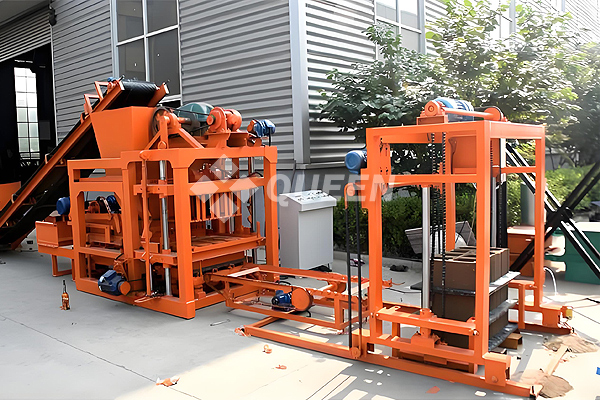Modern brick machines are mostly non-fired brick machines. They mainly consist of an electronic batching system, mixing system, water and cement measuring system, feeding system, material distribution system, forming system, automatic pallet stacking system, automatic pallet loading system, hydraulic system, and electrical control system.

Working Principle of the brick machine:
Raw materials are transported to the batching station by a loader. Cement is fed into the cement measuring device via a screw conveyor, and water is delivered to the water measuring device by a pump. After automatic measurement, all materials are thoroughly mixed in the mixer to form a uniform mixture called concrete.
The concrete is then conveyed via a belt to the main machine’s storage bin. When the storage bin opens, the concrete falls into the distribution machine’s material box, which evenly distributes it into the mold. Under the vibration and pressure of the brick machine, the concrete is shaped into brick molds.
The molded bricks are automatically pushed out and stacked by the automatic pallet stacking system (5–10 layers). Forklifts then transport the stacked bricks to the curing area. After curing for 7–10 days, the bricks become finished products.

